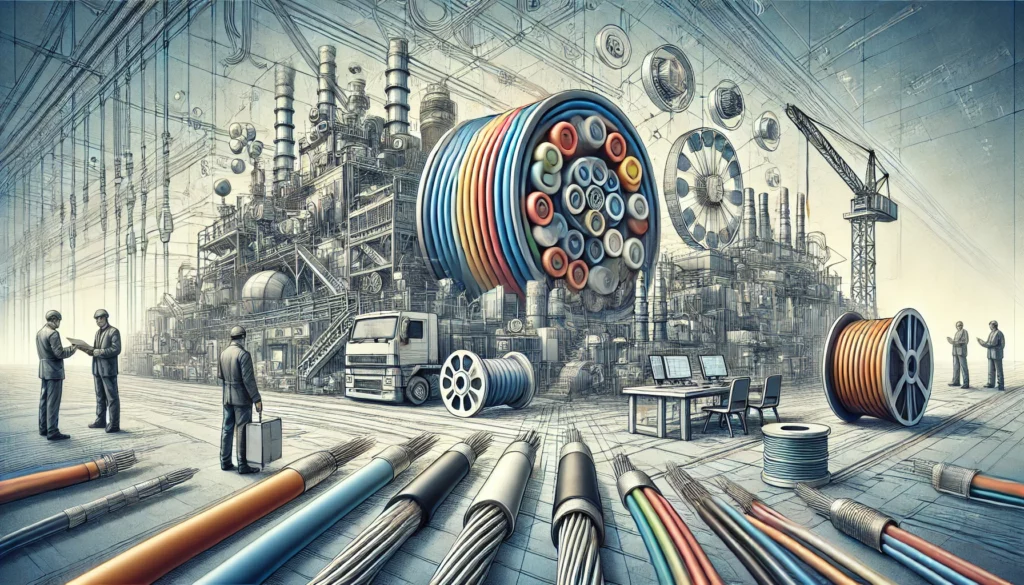
Introduction
The cable industry in China has experienced significant growth over the past few decades, establishing itself as a crucial player in the global market. This analysis explores the historical development, current state, and future outlook of China’s cable industry, with a particular focus on exports and policy changes that have influenced its trajectory.
Historical Development
Early Growth and Industrialization
- 1980s-1990s: The foundation of China’s cable industry was laid during the late 20th century, driven by the country’s rapid industrialization and urbanization. During this period, China began developing its infrastructure, which spurred demand for various types of cables, including power cables, telecommunication cables, and optical fibers.
- 2000s: The early 2000s saw accelerated growth as China emerged as a global manufacturing hub. The entry of foreign investments and the establishment of joint ventures with international companies brought advanced technology and management practices to the domestic cable industry.
Current State
Market Size and Production Capacity
- Market Leader: As of 2023, China is the largest producer and consumer of cables in the world. The country accounts for a significant share of global cable production, with major hubs in provinces like Guangdong, Jiangsu, and Zhejiang.
- Technological Advancements: Chinese manufacturers have adopted advanced technologies, including high-voltage cables, superconductor cables, and eco-friendly materials, enhancing their competitiveness in the global market.
- Key Players: Prominent companies such as Far East Cable, Zhongtian Technology, and Hengtong Group are leading the market with significant shares in both domestic and international segments.
Export Market
- Global Presence: China’s cable exports have grown substantially, reaching markets in Europe, North America, Southeast Asia, and Africa. The export value of electrical cables and wires from China was approximately $15 billion in 2022, reflecting robust global demand.
- Competitive Pricing: The ability to offer competitive pricing, coupled with improvements in quality, has positioned Chinese cables as a preferred choice in many markets.
Policy Environment
- Government Support: The Chinese government has implemented policies to support the cable industry, including subsidies for technological upgrades, tax incentives, and initiatives to boost exports.
- Regulatory Standards: Stricter regulatory standards on environmental protection and safety have been enforced, pushing manufacturers to adopt greener technologies and improve product quality.
Future Outlook
Continued Growth and Expansion
- Infrastructure Projects: China’s Belt and Road Initiative (BRI) and domestic infrastructure projects will continue to drive demand for cables. The focus on renewable energy projects, such as solar and wind power, will also increase the need for specialized cables.
- Technological Innovations: Continued investment in research and development (R&D) will likely lead to further advancements in cable technology, including smart cables and high-performance materials.
- Market Diversification: Chinese companies are expected to diversify their markets further, penetrating new regions and expanding their product offerings to include more specialized and high-tech cables.
Export Prospects
- Strategic Partnerships: Establishing strategic partnerships and joint ventures with foreign companies will be crucial for Chinese manufacturers to gain market access and share in developed economies.
- Quality Improvements: To compete effectively in premium markets, Chinese manufacturers will need to focus on quality improvements and compliance with international standards such as ISO, IEC, and UL.
Policy and Regulatory Changes
- Environmental Regulations: The Chinese government’s commitment to reducing carbon emissions and promoting sustainable development will result in stricter environmental regulations. Manufacturers will need to adapt by adopting eco-friendly production processes and materials.
- Trade Policies: Global trade tensions and protectionist measures could impact China’s cable exports. Diversifying export markets and reducing dependency on a few key markets will be essential strategies.
Conclusion
China’s cable industry has evolved from a nascent sector to a global leader through decades of growth, technological advancements, and strategic policymaking. The industry’s future looks promising, driven by ongoing infrastructure developments, technological innovations, and expanding global reach. However, challenges such as environmental regulations and global trade dynamics will require strategic adaptations by Chinese manufacturers to sustain their competitive edge and growth trajectory.
For further detailed insights, industry reports, and market data, refer to the following sources:
